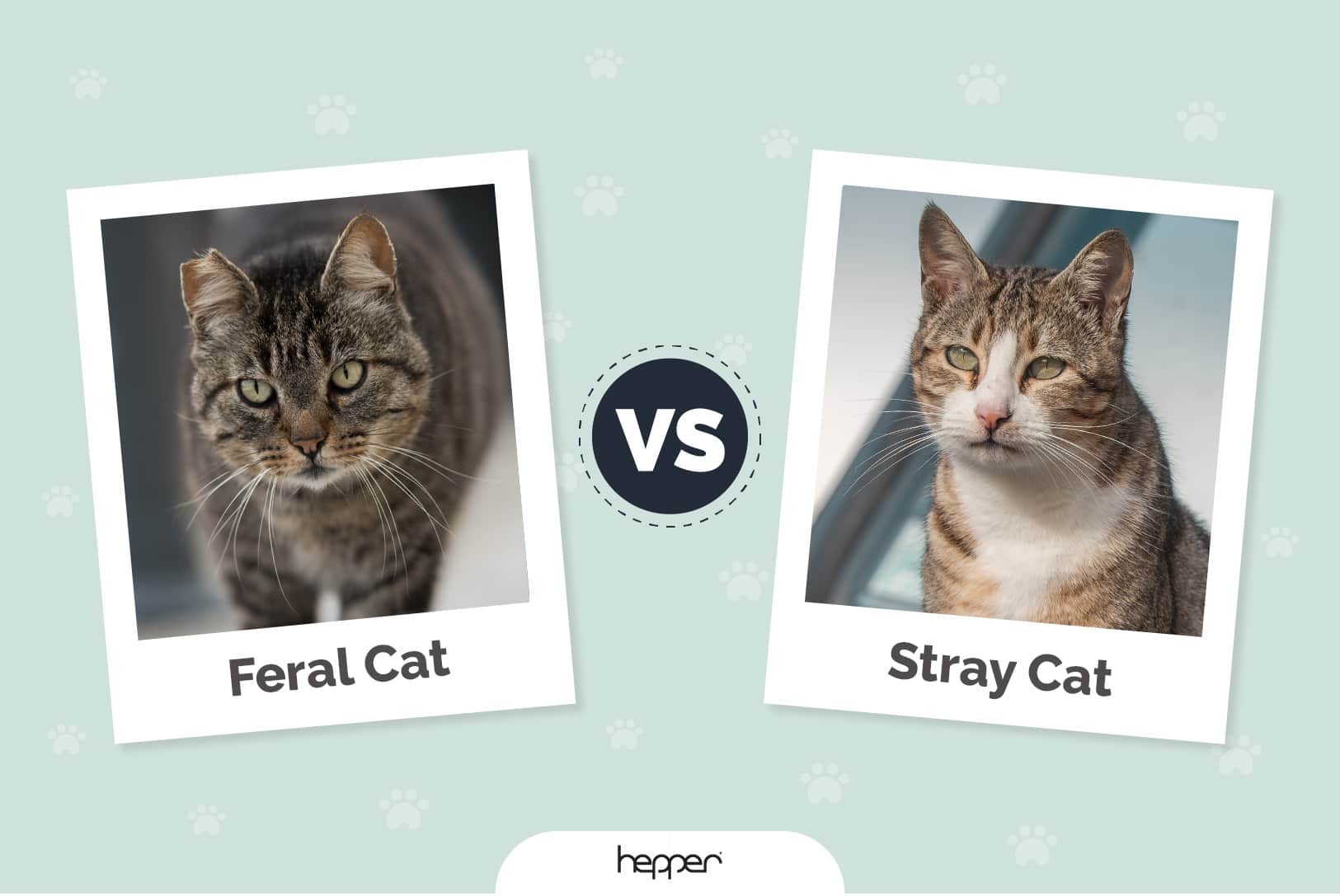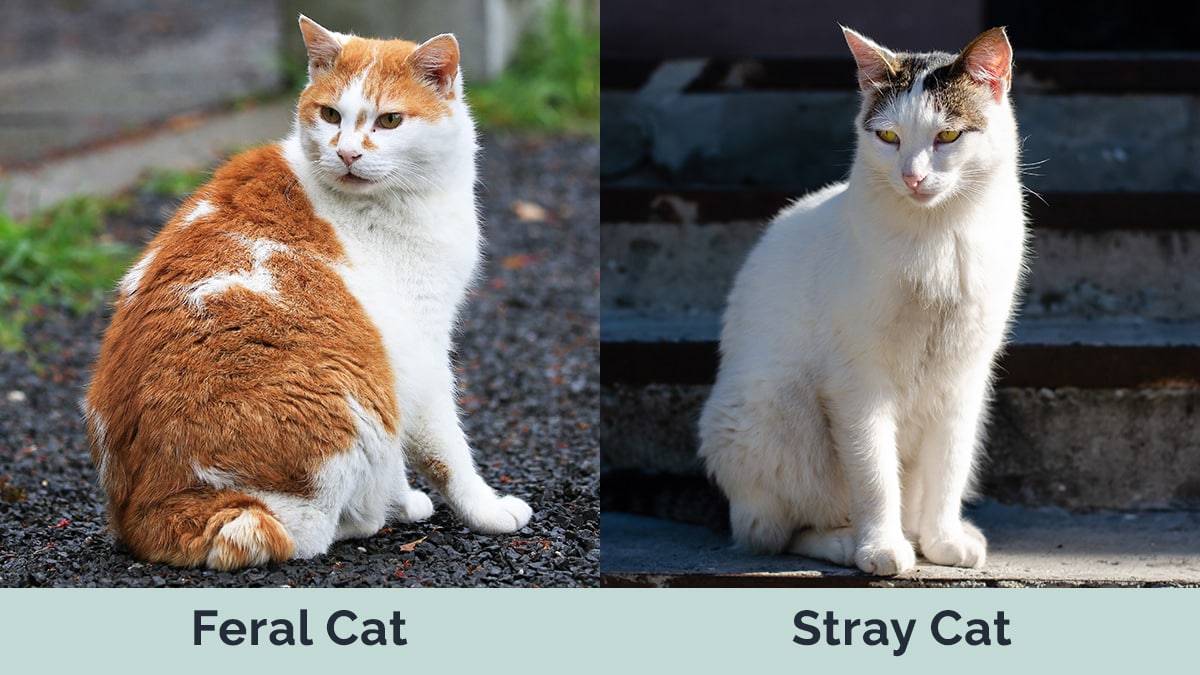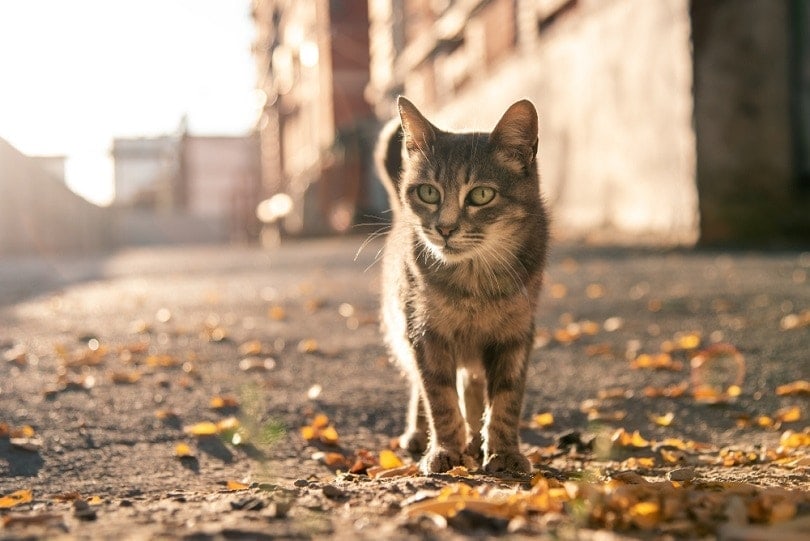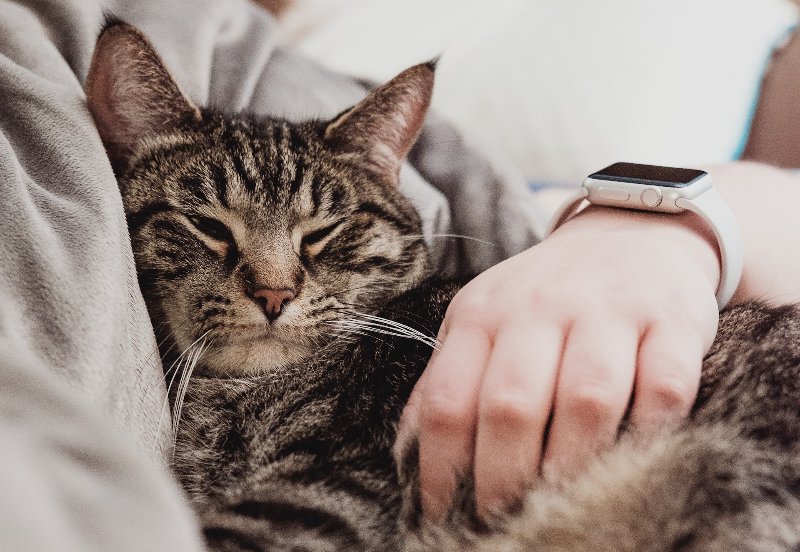Feral Cat vs Stray Cat: Key Differences Explained
Updated on

Click to Skip Ahead
Whether you are part of a cat rescue organization, a veterinary staff member, an animal shelter worker, or just a cat lover seeking knowledge, it is important to be able to tell the difference between your typical stray cat and a feral one. Having this knowledge will help you best interact with an unknown cat and determine the proper actions to take.
Visual Differences

At a Glance
- Lifespan: 0-8 years
- Domesticated? No
- Socialized? No
- Lifespan: 0-15 years
- Domesticated? Possibly
- Socialized? Yes
Feral Cat Overview

Characteristics & Appearance
A feral cat is an outdoor cat that has had no physical contact with humans and is completely unsocialized. Some feral cats may have had minimal contact with humans in their past but likely never grew comfortable or the time exposed to humans was not significant enough to make an impact.
Feral cats are fearful and will avoid humans at all costs. Most feral cats are incapable of becoming household pets that adjust to living indoors. Feral cats may breed over several generations and become aggressive predators and even nuisances in urban environments.
Feral cats will not approach humans and will go out of their way to avoid them. They tend to colonize and can live in large groups. Their appearance can vary depending on their genetics, as they are typical domesticated cats.
You can expect them to look much more rugged, greasy, and unkempt. It is not uncommon to notice feral cats with tips of their ears missing due to fights.
Feral cats have the potential to become more comfortable with humans that regularly feed them but tend to remain distrustful and aloof. Long-term attempts to socialize these cats are often unsuccessful. Feral cats will not make eye contact like your normal cat would and they may display fearful body language when people get too close.
Kittens born to feral cats that get early human intervention can be socialized and turned into loving house cats. This does need to be done as early in their life as possible, preferably right after weaning.
Uses
Feral cats in the United States are understood as cats that were either born and raised in the wild without human contact, or domestic cats that have been lost or abandoned and turned feral out of survival. The estimated population of feral cats in the United States alone is in the tens of millions.
There is a lot of controversy surrounding feral cats and their colonies. There are animal rights groups that advocate for trap-neuter-return programs to prevent the feral population from continuing to breed and grow. These groups put forth effort into feeding these cats and attempting to socialize and adopt out their young kittens.
Others advocate for euthanasia to control and further prevent overpopulation. This is largely due to these cats being unadoptable and incapable of adapting to human socialization. Ferals are picked up by animal control using traps, as they cannot be picked up and handled like your typical cat.
Stray Cat Overview

Characteristics & Appearance
Stray cats are categorized as cats that have either lived indoors at one point or were previously well-socialized with humans but have either been abandoned or lost their home in some way and no longer have regular human contact. These cats have had the opportunity in their life to become accustomed to human contact and even enjoy human companionship.
Kittens become socialized by regularly interacting with humans. If they are held, talked to, and played with from an early age, this can have a long-lasting effect on how the cat feels about human contact. Even if the cat finds itself homeless and surviving on its own, it still craves and enjoys human contact and will potentially seek out strangers for attention and affection.
Stray cats have the potential to become loving household pets again, especially those that have lived indoors previously. Cats that have been outdoors their entire lives tend to have extreme difficulty acclimating to an indoor lifestyle, while those with previous indoor experience can reacclimate well. Of course, this does depend on the individual.
Stray cats may approach people, houses, or even cars in search of attention, food, or simple companionship. These cats tend to live alone, though some do make their way into feral communities. Strays will have the body language of a typical house cat, and they will make eye contact and tend to exhibit no fear of humans.
If you’ve ever had a cat come out of nowhere and begin meowing and rubbing up against your legs, that was most likely a stray cat, unless it is someone’s indoor/outdoor cat or has wandered away from home.
Stray cats can become feral if their interactions with humans become few and far between. Living alone on the streets is difficult for these cats and they must do what it takes to survive. If they are not rescued and adopted, they can live a very lonely, difficult life.
Uses
Many rescue organizations do what they can to help stray cats get off the streets and find loving, forever homes. Stray cats are often brought into shelters and rescue groups due to their social nature. Strays that are accustomed to humans typically will not have trouble being picked up off the street into trusting human hands.
Unfortunately, a large number of stray cats are euthanized each year due to there being more cats in the shelters than there are homes available for them. For this reason, the spaying and neutering of domesticated cats are highly recommended. Not only does it prevent unwanted litters, but it also prevents more cats from ending up with the title of being a stray.
What Are the Differences Between Feral Cats & Stray Cats?
Body Language
Cats communicate primarily through body language. This includes the movement and positioning of their posture, tail, and ears.
Feral Cats
Feral cats will not approach humans. They have no desire for human contact and their body language will be a tell-tale sign. Feral cats will not make eye contact with humans and may walk crouched low to the ground to protect their bodies and move swiftly.
They will lash out and become aggressive if they feel threatened or trapped. Their ears will lay flat to their head and their pupils will dilate. If they have been trapped or have been placed in a shelter, they will display obvious signs of fear, will remain at the back of the cage, and may arch their back and show signs of aggression when cornered. When a feral cat is being held against its will by human captors, it will remain tense and fearful.

Stray Cat
Stray cats will typically show no fear of humans unless they are in a stressful environment, such as a trap or cage. It can be difficult to distinguish a stray from a feral cat when in a tense and stressful situation. A stray cat that is comfortable with humans will have no trouble making eye contact, will walk upright with their tail high, and even rub up against you, purr, and exhibit signs of affection.
Behavior
Feral Cat
Feral cats will not be comfortable in the presence of humans unless it is a person they have associated with regular feedings. Even under these circumstances, feral cats will not approach said humans for any type of interaction; they will simply tolerate the presence as a means for survival.
Feral cats tend to live in colonies of other feral cats and typically come out around dusk when typical human traffic has calmed down. When a feral cat is trapped and brought into a shelter, they will show no interest in people, toys, or even food in some cases.
Feral cats cannot be handled, are incapable of socialization, and cannot be adopted out to new homes. It is not their fault, as they are simply trying to survive, but due to this, feral cats are typically euthanized when picked up by animal control.
Stray Cat
If a stray has been trapped and they are not displaying fearful behavior (which would be well-warranted and not unusual), they may walk to the front of the cage and display very friendly behavior. Even in stressful situations, a stray that is familiar with humans will eventually relax and become less tense over time.
Stray cats are generally adaptable and can reacclimate well into a new home. They may need some time to adjust, as they have lived on their own and had to fend for themselves for some time. Stray cats will have varying degrees of socialization and comfortability with humans, so you cannot expect one to be exactly like another.
Overall, stray cats can turn into wonderful, loving, well-rounded housecats if given the chance at a new life.
Which Cat Is Right for You?
Unfortunately, unless a feral cat gets intervention in early kittenhood, they will not be capable of being pets. It is never recommended that a person try and take a feral cat off the streets unless they are experienced professionals, as this could lead to serious injury. No shelter or rescue organization can adopt out feral cats.
If you are in search of a new cat, a rescued stray cat is the way to go. It can be a wonderful opportunity for you to get a wonderful new family member by offering a loving home to an unwanted stray.
See also:
- How Were Cats Domesticated? What Research Shows
- What Is Ear Tipping for Cats? Vet-Reviewed Facts & Benefits
Featured Image Credit: (L) Nils Jacobi, Shutterstock | (R) Nike Ossler, Shutterstock












